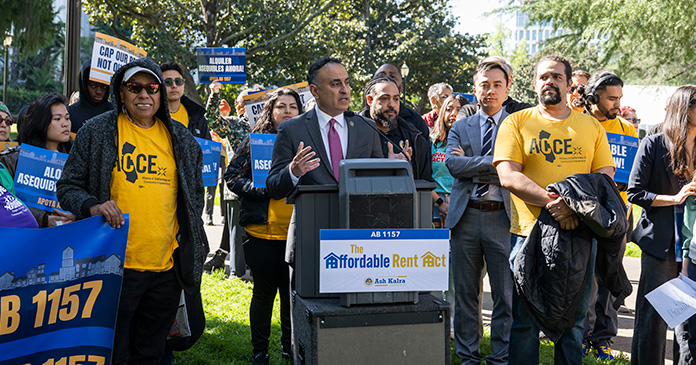There are two basic, indisputable facts that impact the way multifamily firms operate and will perform over the next decade. These two facts are: 1. The size and quality of the available labor pool is shrinking; and 2. The level of employee turnover continues to be far above what should be expected within the service industry sector.
According to a recent CEL & Associates, Inc. survey of employment trends within the multifamily industry, over 80% of Human Resources Directors believe that identifying, recruiting, hiring, motivating and rewarding employees has become more challenging, more time consuming and more costly for their organizations. Surprisingly, less than 30% of multifamily CEOs are fully aware of the burgeoning talent crisis. The hiring and retention of under-performing personnel and the rising costs of employee turnover is a hidden profit center that has become a black hole of lost opportunities and costs.
The U.S. Bureau of Labor Statistics reports there will be 10 million more jobs in 2010 than there will be people to fill them. The real estate industry will share proportionately in that shortage. When vacancies arise today, multifamily firms scramble to find a replacement, 80% or more of those replacements come from competitors. This cycle of “passing around employees” has created a free agent class of employees who follow the money and perceived better opportunity. It is not surprising that a majority of employees who leave cite “a better working environment, better benefits, a better salary and a better, perceived career opportunity” as reasons. Multifamily companies are facing a recurring employment crisis of epic proportions that will continue to drive operating costs higher and will result in “more of the same” performance at higher costs.
Employee turnover rates within the multifamily industry declined from a peak of 38.5% in 1999 to 31.9% in 2003. In some firms, overall annual employee turnover rates are 40, 50, even 60% or more. With typical turnover cost per employee approaching one times their annual base salary, the cost for losing five $35,000 to $45,000 Community Managers could exceed $100,000 or more. There is no line on operating or financial statements that states “Cost of Employee Turnover” and there should be.
Many companies today are deciding whether to build or buy employees. The use of independent contractors, temporary employees and interim workers is rising. Annual bonuses have become “retention bonuses” or “resigning bonuses.” Many firms are locking in their stars through performance-based, long-term incentive plans. To counter this trend, apartment firms need to differentiate performance levels within the reward system by making bonuses reflect varied and meaningful criteria.
For many employees, not getting a bonus (regardless of how well or poorly the organization performed) is an invitation to try the free agency option (e.g., going to the highest bidder). Compounding this dilemma is the flood of applicants for new openings. The problem is not the volume of applicants, but the absence of qualified candidates to fill the positions.
In addition to the lack of available talent to fill new openings, pay differentials are widening by geographic location, employer type (e.g., public, private, affordable, conventional, etc.) and by size of firm. According to CEL & Associates, Inc.’s National Real Estate Compensation & Benefits Survey, the largest of its kind in the U.S. and within the multifamily industry, the cost of talent is increasing faster than the growth of profits and rate of inflation. In 2004, overall compensation increases will be between 3.2 and 3.6%. In an attempt to reduce payroll costs many nonessential positions and functions are being outsourced. The rising costs of healthcare insurance (up over 30% in the past 24 months and likely to be up 14% to 16% in 2004) are creating new rules of employment. To contain these costs, firms should seek advice from independent health insurance experts and not rely on insurance agents.
Under the new rules of employment, workers do not work for a company, they work for themselves. The new employee is a contingent worker who wants career development, not a career. Employees no longer want to be managed, they want to be empowered. Multifamily companies are being asked to view and treat the employee as a customer, in the same way their company serves its residents. Greater loyalty can be fostered by encouraging employee involvement in decision-making and policy formation. Regularly sharing the firm’s goals and strategies can generate a greater sense of job ownership. It’s also important to encourage social and community volunteer efforts to boost employees’ pride in the community and strengthen their sense of place.
To overcome this emerging talent crisis and prosper in the years ahead, multifamily organizations need to enact new strategies:
. Multifamily organizations need to elevate human capital to the same level as financial capital.
. Replace the hire-because-they-are-available practices deployed today with core competency hiring practices.
. Integrate career development planning into every employee’s annual performance evaluation. Put in place ongoing, formalized education opportunities and support them with mentoring and coaching programs.
. Replace discretionary bonus awards with subjective performance measures.
. Develop successors for key positions to reduce the cost of employee turnover.
. Revitalize compensation programs by bench-marking compensation by position and shifting to a pay-for-performance incentive system.
. Adopt productivity measures that quantify contributions to profitability and performance.
. Enhance communications between employees and supervisors.
. Solicit honest feedback from employees by using an independently administered employee opinion survey.
. Perfect leadership and communication skills of all key executives to enhance relationships with employees.
. Reduce unnecessary paperwork, email overload and redundant work practices.
. Companies should encourage social/community volunteerism.
. Ensure all employees receive adequate orientation before starting their job and require all employees to attend an employee orientation once every two to three years.
Overcoming the talent crisis will require multifamily companies to do different things, not just do things differently. Developing and implementing a talent-focused strategy will go a long way toward improving performance and adding dollars to the bottom line.
Author: Christopher Lee
















